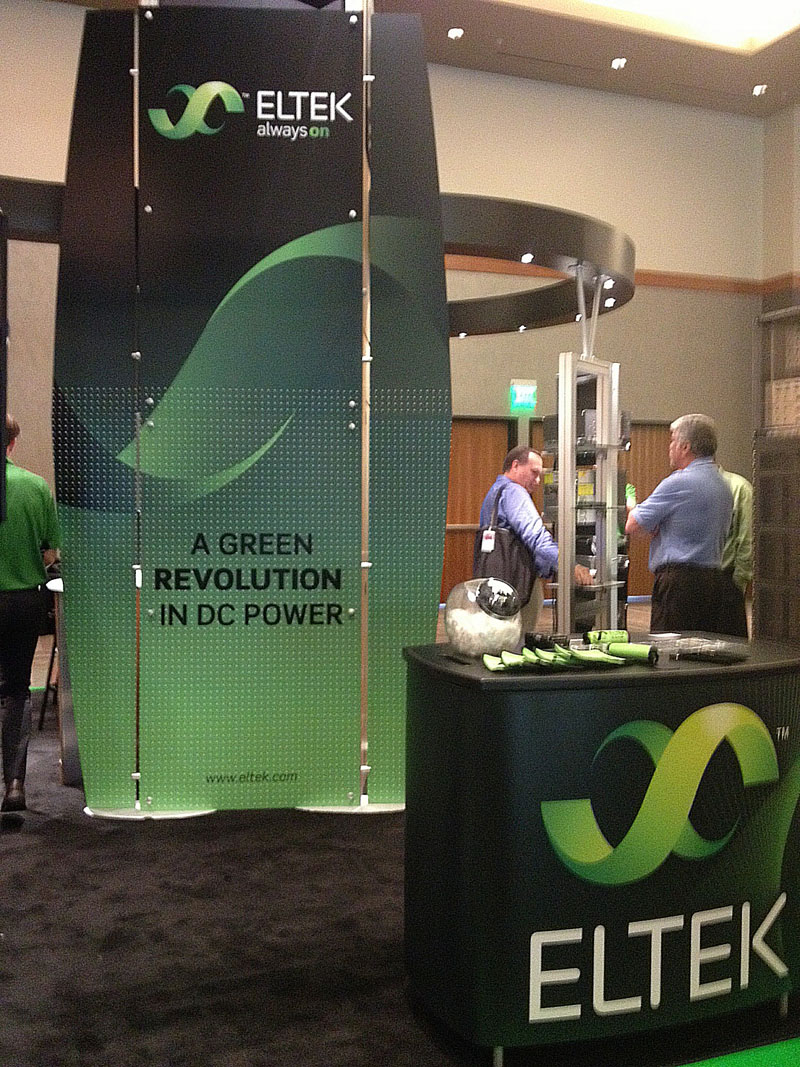Author:
David Morrison, Editor, How2Power
Date
01/21/2013
There was a time when the telecom-power industry largely focused on providing power equipment to support the delivery of POTS (plain old telephone service). That meant providing the AC-DC rectifiers and batteries required in the phone companies' central offices. However, as Kevin Parmenter (figure 1) discusses in his report on the recent INTELEC 2012 (International Telecommunications Energy Conference 2012) in Scottsdale, Arizona, the telecom industry has broadened dramatically over the years with the spread of wired and wireless voice, data, and video communications (figure 2). As a result, the telecom-power field has become broader as well.


In INTELEC bridges the telecom and energy worlds, Parmenter describes the range of energy- and power-related technologies targeting today's telecom industry as reflected by the companies and individuals participating in INTELEC's exhibition and technical program. "The approximately 500 attendees present at this year's event represented a wide range of companies," writes Parmenter. Among these companies were providers of batteries and battery charging equipment, battery test and monitoring equipment, power systems, connectors, and high-current power-distribution products. Parmenter also noted the displays of fuel cells, generators, and hybrid power systems in the exhibition. Simply by reading this list of products, you may get a sense that the exhibit was heavily concerned with the issue of backup power. That was also Parmenter's observation. As he writes, "This theme of backup power, which ran throughout the exhibit, reflects the reality that telecommunications systems, data-communications systems, and wireless are growing most rapidly in regions with no grid or an unreliable grid that can experience random and often sustained power outages. So to power these systems, sites must have multiple options, which can include solar, batteries, wind, fuel cells, grid-tied and generator-powered power sources. Moreover, the control systems and power electronics must be adept at switching seamlessly among these different power sources while managing the battery storage when power is available." Among the offerings Parmenter observed at INTELEC was A123 Systems' Li-ion battery technology, which promises shorter charging times and more charging cycles without degradation (figure 3). He also reports on how GE Power Electronics is offering innovative leasing and financing options as well as financial modeling "to support the [customer's] replacement of aging power systems with newer, more-efficient products" (figure 4).

In addition, Parmenter writes about how trends in the telecom and energy worlds may lead to a convergence of these two fields. "The concern [among power-equipment suppliers] with the end customers' energy costs and their requirements for reliability suggests the need for interconnectivity between telecom systems and the power grid. With the emergence of the smart grid, it would seem that we're heading toward an interdependency between telecom systems, on the one hand, and the energy delivery systems (with their metering and intelligence) on the other," writes Parmenter. Elaborating on this point, he continues, "One possible outcome is that the telecom system will be able to respond to changes in the grid preemptively and proactively in a seamless manner without human intervention. Conversely, if something needs attention at the remote telecom site, a service person will be alerted and simply show up with replacement parts before they are needed or if a redundant system has taken over." Certain technologies such as intelligent battery-management systems, which are needed to support this vision of interconnected and interactive telecom systems and power grids, are already in place. However, as Parmenter explains in his report, a number of security issues will have to be addressed to support this convergence of telecom and power. To read more of Parmenter's observations on INTELEC 2012 and trends in the telecom power field, see INTELEC bridges the telecom and energy worlds in the October 2012 issue of How2Power Today. This issue is available online at www.how2power.com/newsletters. Reading this article may inspire some readers, particularly those in Europe, to attend next year's INTELEC as it will be held October 13-17 in Hamburg, Germany. About the author: When not writing this column, David G. Morrison is busy building an exotic power electronics portal called How2Power.com. Do not visit this website if you're looking for the same old, same old. Do come here if you enjoy discovering free technical resources that may help you develop power systems, components, or tools. Also, do not visit How2Power.com if you fancy annoying pop-up ads or having to register to view all the good material. How2Power.com was designed with the engineer's convenience in mind, so it does not offer such features. For a quick musical tour of the website and its monthly newsletter, watch the videos at www.how2power.com and www.how2power.com/newsletters. How2Power